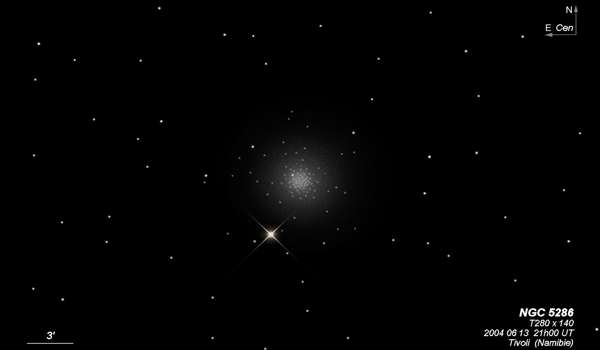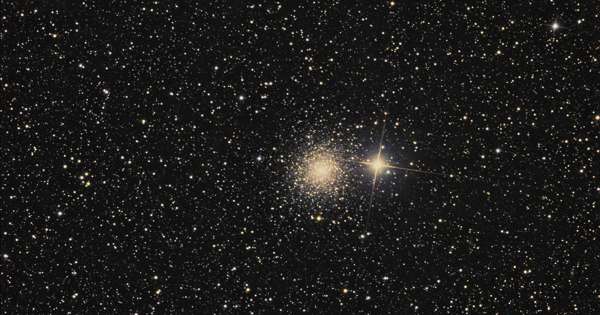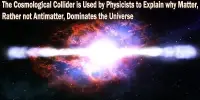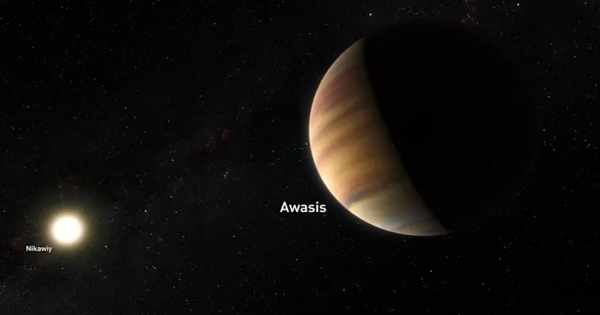NGC 5286 is a globular star cluster 35,900 light-years away in the constellation Centaurus. It is located south of the celestial equator, making it more visible from the southern hemisphere. The light from the cluster has been reddening from interstellar gas and dust at this distance, equal to E(B – V) = 0.24 magnitude in the UBV photometric system. The cluster is located 4 arc minutes north of M Centauri, which is visible to the naked eye. It was discovered in 1827 by Scottish astronomer James Dunlop, who was working in Australia and was listed in his catalog.
Caldwell 84 is another name for NGC 5286. This cluster is located approximately 29 kly (8.9 kpc) from the Galactic Center and is currently orbiting within the Milky Way halo. It could be linked to the Monoceros Ring, a long tidal stream of stars that formed from a disrupted dwarf galaxy. With an estimated age of 12.54 billion years, NGC 5286 may be one of the galaxy’s oldest globular clusters. Although it is not perfectly spherical, it has a projected ellipticity of 0.12.
NGC 5286 is a moderately bright and well condensed globular cluster in Centaurus, not far from the magnificent globular cluster, Omega Centauri. It is located some 35,900 light-years away in the constellation Centaurus.
Astronomers believe that this globular cluster is part of the “Gaia Sausage,” which is thought to be the remnants of a dwarf galaxy that collided with the Milky Way between 8 million and 10 million years ago. The dwarf galaxy was ripped apart by gravitational interaction as it merged with our galaxy, leaving behind several globular clusters and millions of stars with unusual orbits. When the velocities of these stars are plotted on a chart, an elongated, sausage-like shape emerges as a result of their unusual orbits.
Because globular clusters such as Caldwell 84 are more common in larger galaxies, astronomers believe the dwarf galaxy that collided with the Milky Way was one of the Milky Way’s early satellite galaxies.

The velocity dispersion of stars in the cluster’s core is (8.1 1.0) km/s. Based on the motions of the stars at the cluster’s core, it could be home to an intermediate-mass black hole weighing less than 1% of the cluster’s mass. The upper limit for this object’s mass estimate is 6,000 times the mass of the Sun.
NGC 5286 is a component of the Gaia Sausage, which is thought to be the remains of a merged dwarf galaxy. This globular cluster, which is located in the constellation Centaurus and has an apparent magnitude of 7.6, can be seen with a small telescope. However, scattered light from the nearby 4.6-magnitude star M Centauri can make observing the cluster difficult. It is most visible during the autumn season in the Southern Hemisphere.
















